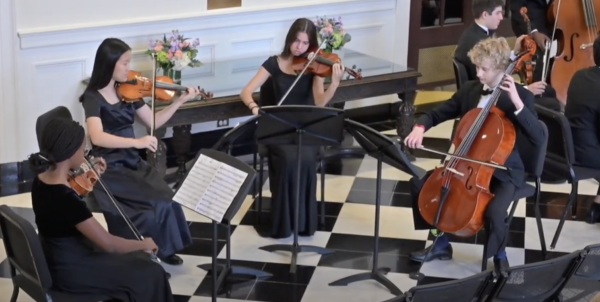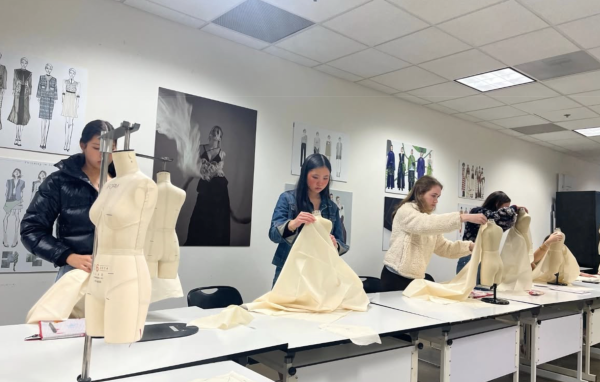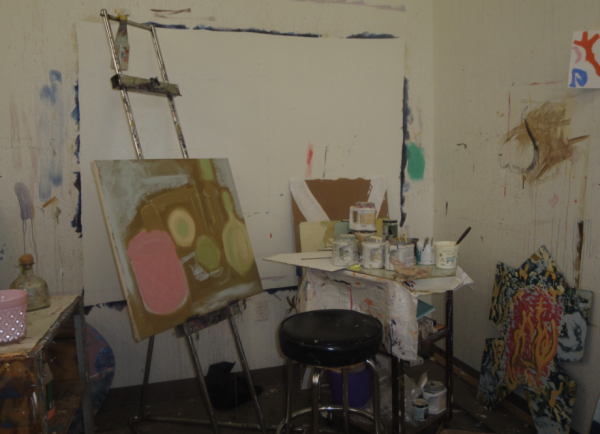Cuban artist showcases paintings in Broyles art gallery
Throughout the entire month of October, students had the opportunity to see Cuban artist Alejandro Aguilera’s artwork showcased in Broyles Arts Center. Aguilera hand-picked an eclectic collection of drawings and paintings to display for the Westminster community, including some of his most well-known pieces.
Aguilera was born in Cuba in 1964 and moved to Atlanta around 1995, where most of his wife’s family lives. During his early life, he attended the Higher Institute of Art in Havana, and the School of Art in Holguin, his hometown. He later received a master’s degree in sculpting from the Massachusetts College of Art in Boston.
Westminster’s own Upper School art teachers Pamela Martinez and Benjamin Steele worked with Aguilera to set up the exhibit. It is a privilege for the Westminster community to see his work, which has also been featured in the High Museum of Art, and other well-known museums around the country.
Each artist has their own vision when it comes to their work. Martinez’s art, for example, is religious in nature.
“The aesthetic is a very contemporary style, with a hidden religious message,” said Martinez. “I try to break every stereotype of a religious image of all traditions.”
Aguilera’s, on the other hand, is more involved with his personal story and his heritage. Although Aguilera earned his master’s degree in sculpting, he brought both paintings and sculptures made from found objects and wire. His other work ranged from large ink paintings to small political cartoons.
“You can tell Aguilera’s paintings really convey a deeper political meaning, just by the type of style his paintings have,” said junior Kyla Barnwell. “The pieces are not just art for the eye. They are art for you to think about.”
Aguilera has been pursuing art from the young age of eight. His grandmother, seeing his passion for drawing and painting, enrolled him in an art school in Cuba when he was 12.
“When I was young, my father used to paint and make sculptures,” said Aguilera. “He was the one who mainly got me involved in art. He liked to paint, create, and he loved gardening, which is where his color palette originated.”
There was a great shift in Aguilera’s work and style when he moved to America. His work has become increasingly abstract in recent years, while still retaining strong references to memories of his time living in Cuba. For example, he uses small flags as well as motifs related to the ocean and to landscape to retain the island setting of Cuba. Aguilera combines these elements with the swirling imagery of what he describes as “primitive cultures.”
“Being free means being responsible,” said Aguilera. “My aesthetic is about experiencing freedom in America; it is half intuition, half rational thought.”
Aguilera’s process reflects his style. Rather than having a strict picture of his final product he starts with an idea and lets that idea grow and evolve.
“I really like the way he starts his paintings,” said senior Hannah Namnoum, who had the opportunity to hear Aguilera speak during her art class. “They’re very large and abstract. He doesn’t really have a plan for them, and doesn’t sketch anything out. He just starts in the middle and works from there.”
The majority of Aguilera’s artwork is based on his life back in Cuba. Much of his influence came from Cuban architecture and landscapes.
“My work is mainly about life in Cuba, and the socio political situation there,” said Aguilera. “The backgrounds from that country are very beautiful for my art.”
Aguilera also lived in Mexico for five years with his wife, which played a significant role in his work. Mexican culture and literature, especially, were factors he drew inspiration from, and he continues to incorporate them into his work today. Aguilera has a professional gallery in Mexico as well, and much of the work contains themes close to Mexican food, people, history, and environment.
Mexico is not the only place Aguilera’s work can be found. He has exhibited his work in the United States and internationally in the public collections of the National Museum Palace of Fine Arts in Havana, the Museum of Contemporary Art in Monterrey, Mexico, the Museum of Art in Fort Lauderdale, Florida, and the Hartsfield International Airport in Atlanta. Some of his most famous pieces include Picasso Under Water, 2005, Constantin Brancusi, 2011, and Louise Bourgeois: Portrait of the Young Artist, 2011.




